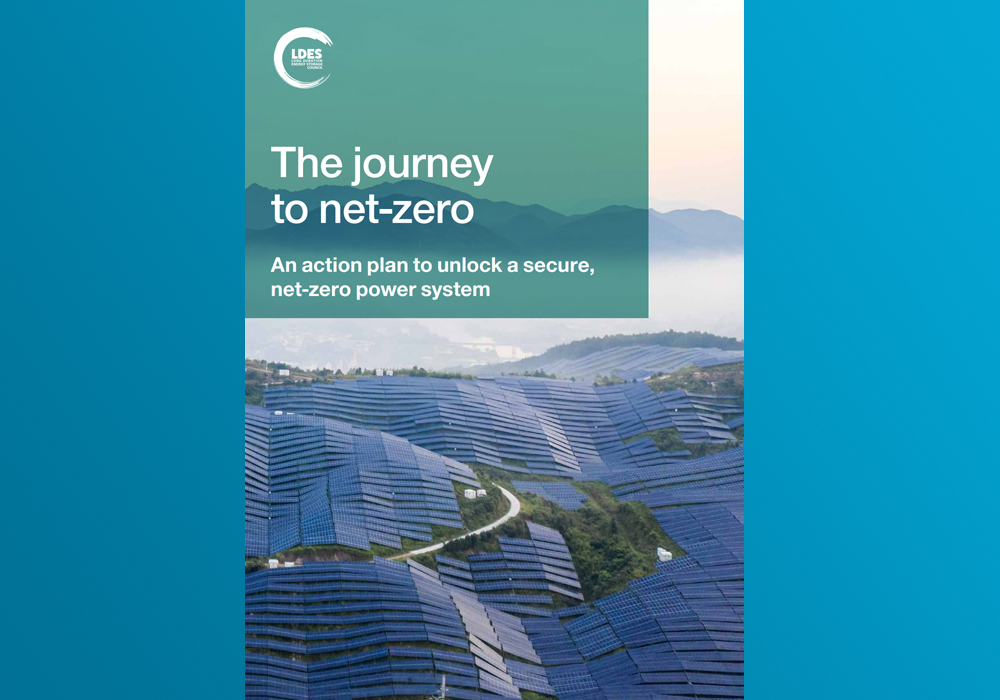By Eric Dresselhuys, CEO
Last week, the Long Duration Energy Storage Council, of which ESS is a founding member, released its latest report, The Journey to Net-Zero: An Action Plan to Unlock a Secure, Carbon-free Power System. The report underscores necessary policy reforms to enable and encourage the adoption of Long-Duration Energy Storage (LDES), a critical component of the clean energy transition which will support higher penetrations of renewable energy and enhance grid resilience and reliability.
There is broad recognition among policy makers, utilities, independent power producers and many others of the need for significant implementation of LDES to meet our decarbonization goals. Unfortunately, outdated regulatory structures have failed to keep pace with technology innovations, creating challenges in realizing the full potential of these solutions and thus slowing implementation.
These barriers include narrow regulatory definitions of storage technology, lack of clear market signals and a failure to undertake comprehensive capacity planning during the move to renewable generation assets. Policymakers and regulators need to start building the policy foundation that enables a zero-carbon future now, which will drive the private sector to the massive implementation required to meet net zero goals.
There are three primary areas where policymakers and regulators can act to facilitate deployment of LDES and remove barriers, enabling deep decarbonization:
- Provide long-term market development signals
Creating storage targets, as is now the case in nine U.S. states, as well as incorporating energy storage into grid planning efforts will be vital to enabling the deployment of LDES. Carbon pricing and the removal of fossil fuel subsidies can also help level the playing field for LDES when matched against conventional forms of fossil-fired grid flexibility.
- Establish resource compensation mechanisms
Existing market rules in most markets, do not sufficiently compensate LDES assets for the value they deliver. Grid services provided by LDES include energy, reliability, capacity and other ancillary grid benefits. In most markets, only a subset of these services is compensated, often via short tenor contracts. Reforming market structures to provide resource compensation mechanisms would improve the financial viability of LDES projects for customers and investors and more appropriately value their benefits. These could include mechanisms that both enhance revenues and provide long-term revenue certainty, such as contracts for difference, price caps and floors, hourly energy attribute certificates, and shaped power purchase agreements. Many of these are compatible with and can enhance existing energy markets.
- Allow and support direct technology and enabling programs
Direct support and enabling programs in the form of public/private partnerships, grants, and targeted tenders to accelerate early projects can also unlock growth. It’s critical that narrow definitions of storage in Requests for Proposals (RFPs), operating standards, and market rules be expanded and made more flexible to include LDES. Various regions and jurisdictions are already experimenting with a combination of these tools to support the broader deployment of grid-scale energy storage, including LDES.
The way forward
McKinsey & Co. and the LDES Council published a study in late 2021 that found the U.S. will need up to 140 TWh of LDES to build a cost-optimal net-zero energy system. To get us there, regulators and grid operators have at their disposal a wide range of options that can deliver the clean energy future and enable the deployment of new technologies.
To learn more about policy strategies to unlock the LDES and clean energy future, read the full report.
Links to third-party articles and/or websites are for general information purposes only and the content of any third-party article or website is solely the responsibility of the author, owner, operator or publisher of that article and/or website. Views expressed in third-party articles and/or websites reflect the opinion of the author, owner, operator or publisher as of the date of publication, and not necessarily those of ESS Tech, Inc. ESS Tech, Inc. has not independently verified such content, makes no warranties, representations or undertakings relating to such content, and bears no responsibility for the accuracy, legality or content of any external site or for that of subsequent links. Any reliance you place on such information is strictly at your own risk. You are encouraged to read and evaluate the privacy and security policies on the specific site you are entering. ESS Tech, Inc. disclaims any loss, damage and any other consequences resulting directly or indirectly from or relating to your access to the third-party website or any information you may provide or any transaction conducted on or via the third-party website or the failure of any information, goods or services posted or offered at the third-party website or any error, omission or misrepresentation on the third-party website or any computer virus arising from or system failure associated with the third-party website.

